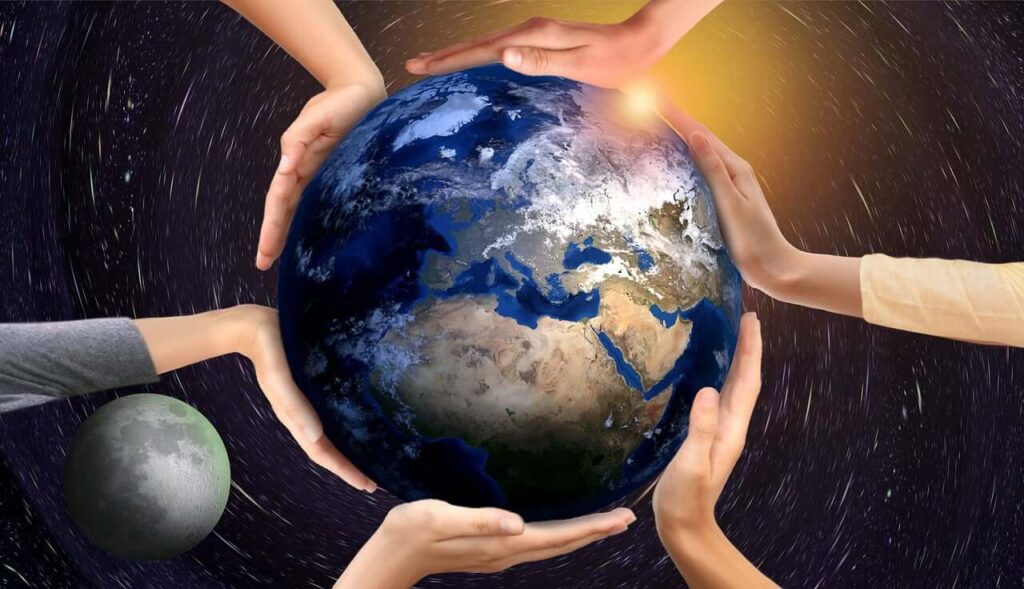The Urgency to Protect Our Planet: Unveiling the Age of Human Existence
## Introduction to the Age of Human Existence
The history of our planet stretches back billions of years, and throughout this vast expanse of time, many different forms of life have come and gone. However, it is the presence of humans that marks a significant turning point in Earth’s history. So, just how long have humans been on Earth? Let’s delve into the timeline of human existence and explore the profound impact we have had on our planet.
The Timeline of Human Presence on Earth
The story of human existence on Earth is an awe-inspiring journey that spans over millions of years. Our ancient ancestors, the Homo genus, first appeared around two million years ago. They were followed by various hominin species, such as Homo habilis, Homo erectus, and Homo neanderthalensis. It was around 200,000 years ago that Homo sapiens, our modern human species, emerged. This relatively recent development in the timeline of life on Earth is what sets us apart from other species.
The Significance of Understanding Human Existence in the Context of Earth’s History
Understanding our place in Earth’s history is crucial for comprehending the responsibility we have towards the planet. We are not isolated beings; rather, we are part of a complex web of life that has developed over billions of years. By acknowledging the vastness of Earth’s timeline, we gain a deeper appreciation for the interconnectedness of all species and the profound impact our actions can have on the delicate balance of our ecosystems.

Factors That Have Shaped Human Evolution and Development
Throughout our existence, humans have been shaped by a multitude of factors. From geological changes to climatic fluctuations, these influences have played a vital role in our evolution and development. For example, the Ice Age forced our ancestors to adapt to harsh environments, leading to the development of advanced tools and techniques for survival. Our ability to adapt and innovate has been a driving force behind our success as a species.
The Impact of Human Activities on the Environment
While our evolutionary journey has been remarkable, it has also had unintended consequences for the planet. The exponential growth of our population, coupled with industrialization and technological advancements, has resulted in significant environmental degradation. Deforestation, pollution, and the depletion of natural resources are just a few examples of the detrimental impact of human activities. These actions have led to the disruption of ecosystems, the loss of biodiversity, and the acceleration of climate change.
The Urgency to Protect Our Planet for Future Generations
As we become increasingly aware of the consequences of our actions, the need to protect our planet becomes more urgent than ever. The future of our children and grandchildren depends on the choices we make today. By safeguarding the environment, we can ensure a sustainable and thriving planet for future generations. This responsibility lies not only with governments and organizations but also with each and every individual.

Scientific Research and Evidence Supporting the Need for Environmental Conservation
Scientific research provides us with invaluable evidence of the urgent need for environmental conservation. Studies have shown that human activities have resulted in a significant decline in global biodiversity, with many species on the brink of extinction. Furthermore, the alarming rise in global temperatures and the increasing frequency of extreme weather events are clear indications of the impact of climate change. These scientific findings serve as a wake-up call, urging us to take immediate action to protect our planet.
Initiatives and Movements Promoting Sustainability and Conservation
Fortunately, there are numerous initiatives and movements dedicated to promoting sustainability and conservation. Organizations like Greenpeace, World Wildlife Fund, and the Sierra Club are working tirelessly to raise awareness, advocate for policy changes, and implement sustainable practices. Additionally, international agreements such as the Paris Agreement aim to unite countries in their efforts to combat climate change. These collective efforts demonstrate that the urgency to protect our planet is recognized on a global scale.
Individual Actions to Contribute to a Sustainable Future

While government and organizational actions are essential, individual actions also play a crucial role in creating a sustainable future. There are various steps we can take in our daily lives to reduce our environmental footprint. These include conserving energy, minimizing waste, adopting eco-friendly transportation options, supporting local and sustainable businesses, and making conscious consumer choices. By making these small but impactful changes, we can contribute to the collective effort of protecting our planet.
Conclusion: The Role of Each Individual in Preserving the Planet for Future Generations
In conclusion, the age of human existence marks a significant chapter in Earth’s history. As we reflect upon our timeline, we realize the profound impact we have had on the planet and the urgent need to protect it. By understanding our interconnectedness with Earth and each other, we can embrace our responsibility to preserve the environment for future generations. Through scientific research, collective initiatives, and individual actions, we can create a sustainable future that ensures the well-being of our planet and all its inhabitants.
CTA: Why Do We Need to Save Our Planet?
The urgency to save our planet cannot be overstated. The consequences of inaction are dire, with the potential for irreversible damage to ecosystems and the loss of countless species. By taking action now, we can mitigate the effects of climate change, preserve biodiversity, and create a sustainable future for generations to come. Together, let’s stand up for our planet and work towards a future where both humans and the environment thrive.










